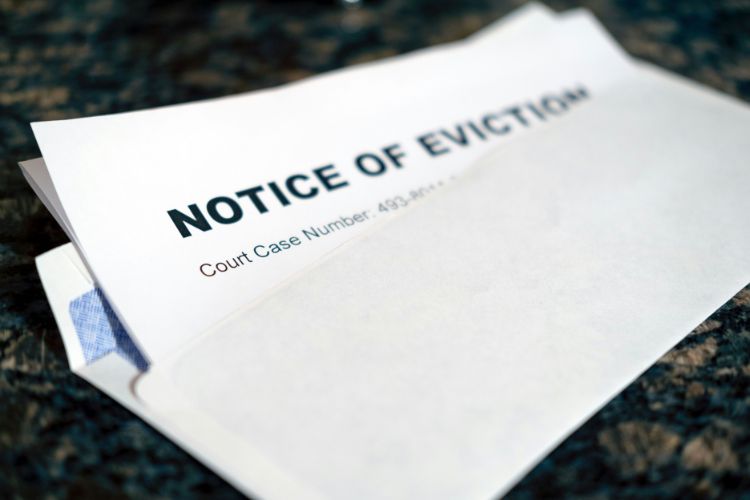Various situations can drive landlords to want to evict their tenants. However, one thing remains constant in every eviction process; the legal procedures and timeframes are daunting.
Unfortunately, resorting to eviction can be inevitable in many cases where the tenant blatantly or repeatedly breaches the terms of your lease agreement.
Even without violating those conditions, some tenants can be too uncooperative, disrespectful, or problematic for rental providers to maintain a tenancy agreement with.
If this sounds familiar, this guide on how to evict a tenant in Qld will give a better understanding of the process. We’ll break it down into steps and cover the prominent rules to save landlords some time and stress.
Step 1: Review the Type of Tenancy
Your first order of business as a landlord attempting to enforce an eviction is to check the type of tenancy agreement that you’re engaged in with the tenant you’re looking to evict.
The reason is simple — the eviction process in Queensland can include variations based on the tenancy agreement type. The most prominent difference is the period that landlords have to wait before eviction.
Generally, there are 2 types of tenancies in Qld: fixed-term tenancy and periodic tenancy.
- Fixed-Term Tenancy Agreement: In this type of tenancy agreement, the tenant stays renting the property for a set amount of time. After the finish date comes around, the fixed-term expires and both parties enter a new fixed-term agreement if they wish to continue the tenancy.
In the event of not setting a fixed-term agreement, the tenancy switches to a periodic agreement until the tenant or landlord gives notice.
- Periodic Tenancy Agreement: This type of tenancy lease is monthly based and has no finish date.
If the tenancy agreement is a fixed-term lease, the landlord can not begin the eviction process before the specified duration of the agreement ends. In other words, the landlord can’t issue a notice until the finish date of the lease.
So what if the tenant violates the terms of the agreement before the end of the fixed-term lease? In this case, the landlord or the property manager can apply to obtain a court order for a repossession.
As for periodic tenancies, the landlord is allowed to issue a notice for the tenant to leave at any point during the agreement. If the tenant doesn’t leave by the set date, the landlord or the property manager can apply to take possession via a court order.
Step 2: Determine the Grounds and Minimum Timeframe
The next step is for the landlord to figure out the reason they’re going to base the eviction on, otherwise known as the grounds of eviction. When they do, they can identify the corresponding minimum notice period that should be allowed to the tenant.
The following are nearly all the possible grounds for tenant eviction and issuing of Form 12 Notice to Leave. Keep in mind that most of them are also grounds for strata to issue an unruly tenant with a compliance or eviction notice.

Termination of a Tenancy
If the tenancy agreement type is a fixed-term lease, the landlord or property manager can initiate eviction with a notice at the end of the tenancy. They can do so up to one day before the agreement’s end date or any time after it’s finished.
The rental provided, however, has to allow a minimum notice period of 2 months.
As for periodic tenancies, we already clarified the landlord or their property manager can terminate the agreement at any time. However, they must provide a notice period of at least 2 months.
If applicable, see here for more reading on covering rent arrears with landlord insurance.
Failure To Produce Overdue Rent
If the property owner or manager gave the tenant a Notice of Breach for late payment of rent and they failed to comply, the former has the right to issue the tenant a Notice of Leave.
For the Notice of Breach, the rent has to be at least 7 days late. If the tenant doesn’t deliver due payment within the specified period, the landlord can terminate the tenancy with a minimum of 7 days notice.
Here, we should also mention that if a tenant has lived less than 28 days in the rental property and failed to pay rent, the landlord or the property manager can ask them to leave immediately.
Failure To Mend a Breach
If the landlord or property manager had previously given the tenant a Notice of Breach and the tenant failed to comply within the timeframe specified, the rental provider has the right to issue the tenant a Notice of Leave. The minimum notice period in this case is 14 days.
Property Unfit for Living or Destroyed
If, due to a certain event, the rental property has been made unfit for living accommodation or destroyed, the landlord or property manager is entitled to issue the tenant a Notice to Leave effective immediately.
This means that the tenancy agreement is terminated on the spot, but there still should be reasonable time allowed for the tenant to move out.
The issuing of this Notice of Leave has to occur within 1 month of the destructive event. Additionally, the damage mustn’t be caused by the rental provider or the tenant.
Not Complying With a Tribunal Order
If the tenant doesn’t comply with an order issued by the Tribunal within the timeframe specified, the property owner or manager can give the tenant a Notice of Leave within at least 7 days.
Property Unusable as a Residence
If the property can’t be used as a place to live for reasons such as significant renovations, substantial repairs, planned redevelopment, or scheduled demolition, the property owner/manager must issue the tenant with a Notice to Leave of at least 2 months.
Property Sale
If the property owner is in the process of selling the property and the sale contract states to hand over the property vacant, then the landlord must give the tenant a Notice of Leave of at least 1 month (ending after the fixed term expires).
Serious Breach
A tenant who has seriously violated the tenancy agreement can be given a Notice of Leave immediately or at least 7 days. Examples of a serious breach include intentionally damaging rental property, illegal activity, and endangering others’ lives.
Mortgagee in Possession
In this case, the landlord would have taken a mortgage but failed to make the due payments on time. The lender or mortgagee would then exercise their right to possess the property that the borrower (the landlord) had taken the mortgage on – which is the rental property.
The minimum notice period for this ground is 2 months.
Step 3: Serve the Notice

After pinpointing the correct type and form of notice to issue, the landlord or property manager must ensure the notice is served by post, email, fax, or hand.
They must also account for the time it would take for the notice to reach the tenant when calculating the end date of a notice period.
What if the Tenant Doesn’t Evict on Time?
The landlord or property manager can directly apply for a termination order with the QCAT (Queensland Civil and Administrative Tribunal).
When Can a Property Owner or Manager Remove a Tenant?
A landlord or property manager in Qld is allowed by law to remove a tenant from a rooming accommodation. However, they must adhere to a strict process to guarantee the legality of the situation.
Removing a tenant is acceptable only when the 3 following conditions are met:
- A Form 12 Notice to leave has been issued to the tenant by the landlord or property manager.
- The date by which the tenant has to vacate has passed.
- The renter refuses to leave the property.
In certain cases, the landlord or property manager can immediately remove the tenant. Generally, this happens when the renter has committed a serious breach of the tenancy agreement.
To give you proper context, here are some reasons that merit immediate tenant removal:
- The tenant has endangered the life of another person.
- The tenant has used the property or a common area for illegal activity, such as selling or doing drugs
- The tenant has seriously disturbed the comfort or peace of another tenant.
- The tenant has seriously invaded the privacy of another tenant.
- The tenant has seriously hindered the ability of another tenant to use a common area or their room.
- The tenant or a guest of theirs has purposely destroyed or damaged a part of or a facility in the rental property. Note that this is an aspect where your landlord insurance or building insurance can come in handy.
Under such circumstances, the landlord or the property manager (along with any person they bring to help) is allowed to enter the property and remove the tenant refusing to leave. They can also remove the tenant’s belongings from the property.
Conclusion
The key takeaway from this guide on how to evict a tenant in Qld is that the property owner/manager must follow strict rules and timeframes. After determining the ground for eviction, the correct notice and associated form must be used, otherwise, the tenant may be entitled to compensation.

